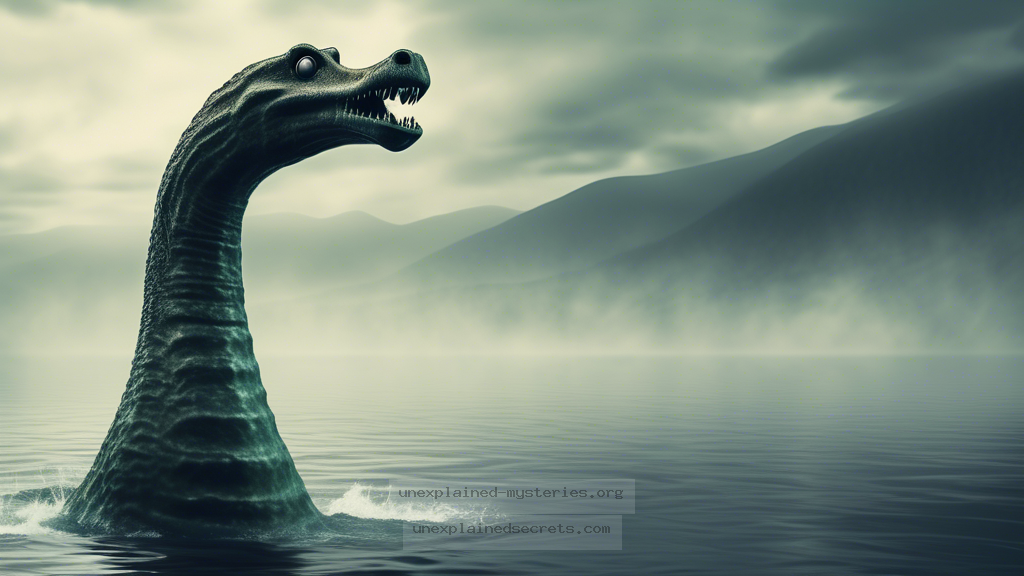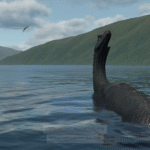What Do Sonar Discoveries Reveal About the Elusive Loch Ness Monster?
What Do Sonar Discoveries Reveal About the Elusive Loch Ness Monster?
The Loch Ness Monster, affectionately known as “Nessie,” has been a subject of fascination and debate for centuries. While countless stories and sightings have emerged, the advent of modern technology, particularly sonar, has added a new layer of intrigue to this mystery. The question of what sonar discoveries have revealed about Nessie is crucial, as it intertwines the realms of cryptozoology and scientific inquiry. This post will delve deep into the enigmatic sonar findings that have either supported or challenged the existence of this legendary creature.
Historical Context of Loch Ness Monster Sightings
The legend of the Loch Ness Monster dates back to at least the 6th century, with the most famous account being that of St. Columba, who purportedly encountered a “water beast” in the loch. However, it wasn’t until the 1930s that Nessie became a household name, thanks to the infamous “Surgeon’s Photograph” of 1934. This grainy image, which many later claimed was a hoax, sparked a frenzy of interest and numerous expeditions to find evidence of the creature.
Since then, thousands of alleged sightings have been reported, varying from vague shapes in the water to more detailed accounts describing a large, reptilian creature. The fascination with Nessie has not only captured the public’s imagination but has encouraged a blend of folklore, science, and skepticism that continues to this day.
The Role of Sonar Technology in Loch Ness Research
Sonar, or sound navigation and ranging, is a technology that uses sound waves to detect objects underwater. In the context of Loch Ness, sonar has been instrumental in navigating the depths of the loch, which reaches a maximum depth of about 230 meters (755 feet). The application of sonar technology in Loch Ness research has evolved over the years, from simple echo sounders to sophisticated multi-beam sonar systems. These advancements have allowed researchers to map the lake’s bottom accurately and detect any large objects lurking beneath the surface.
One notable sonar survey was conducted in 2018 by a team of scientists from the University of the Highlands and Islands. They employed advanced sonar technology to scan the loch and ultimately concluded that no evidence of a large creature consistent with the descriptions of Nessie was found. However, sonar technology has also detected some intriguing anomalies that fuel ongoing speculation.
Notable Sonar Discoveries and Their Implications
Several sonar expeditions have produced noteworthy findings. In 1994, a team led by explorer Adrian Shine utilized sonar to uncover a large, unexplained object in the loch, measuring over 30 feet long. This sparked immense interest, leading to various theories regarding what it could be—from a large fish to a submerged log, or even the Loch Ness Monster itself. However, further investigation often reveals these anomalies can be attributed to natural phenomena or human-made objects.
In recent years, sonar technology has identified a series of large, mysterious shapes that sometimes appear in the loch’s depths. These shapes, often termed “Nessie-like,” have fueled ongoing debates. While some enthusiasts argue these findings are evidence of a creature, skeptics maintain they are simply misidentified debris or natural formations. Such discrepancies highlight the challenges of interpreting sonar data in a body of water as deep and murky as Loch Ness.
Comparative Analysis of Sonar Data Over the Years
| Year | Research Team | Findings | Conclusion |
|---|---|---|---|
| 1987 | Operation Deepscan | Identified a large object | Later attributed to a large fish or debris |
| 1994 | Adrian Shine’s Team | Detected a 30-foot object | Unconfirmed, possibly natural |
| 2018 | University of the Highlands and Islands | No large creatures found | No evidence of Nessie |
Core Theories Surrounding Sonar Anomalies
The interpretations of sonar findings at Loch Ness vary widely, with several core theories emerging about what these unexplained anomalies might signify. One prevalent theory is that the loch’s unique topography creates unusual acoustic signatures, which can confuse sonar readings. The depths of Loch Ness are filled with silt and organic matter, which may lead to the misinterpretation of sonar signals.
Another theory suggests that the infamous creature may have once existed but could now be extinct or have taken refuge in deeper, less accessible parts of the loch. This theory aligns with the idea that sonar may occasionally pick up remnants of past life or large fish such as sturgeons, which can reach impressive sizes and resemble descriptions of Nessie.
Finally, some believe that sonar anomalies may simply be the result of human imagination, attributing the shapes detected to wishful thinking rather than scientific evidence. This concept emphasizes the psychological aspect of the Loch Ness legend, where the desire to believe in something extraordinary can lead to misinterpretation of data.
Common Misconceptions About Sonar and Loch Ness
One common misconception is that sonar can definitively identify all objects in the water. In reality, sonar is limited by factors such as water clarity, temperature, and the nature of the objects being detected. For instance, small or irregularly shaped objects may not produce a clear signal, leading to the assumption that they do not exist.
Another misconception is that sonar findings are inherently credible. While sonar technology is advanced, its interpretations are subject to human analysis, which can introduce bias. The belief that sonar can provide irrefutable proof of Nessie’s existence is misleading; it is merely a tool that, when used correctly, can help gather information about the loch’s inhabitants.
Best Practices for Investigating Sonar Findings
Investigating sonar findings at Loch Ness requires a systematic approach to ensure accurate and reliable results. Researchers should prioritize the following best practices:
- Utilize Advanced Technology: Employing the latest sonar technology, including multi-beam and side-scan sonar, can provide a clearer picture of what lies beneath the surface.
- Conduct Comprehensive Surveys: Multiple sonar surveys at different times and under varying conditions can help verify findings and reduce anomalies.
- Collaborate with Experts: Engaging experts in marine biology, acoustics, and cryptozoology can offer diverse perspectives and enhance the credibility of findings.
- Document and Analyze Findings: Thorough documentation and analysis of sonar data are crucial for drawing informed conclusions.
- Remain Skeptical: A healthy dose of skepticism ensures that researchers remain open to alternative explanations and avoid confirmation bias.
Future Developments and Ongoing Research
The quest to uncover the truth about the Loch Ness Monster continues, with numerous teams planning future sonar expeditions. Advances in technology, including artificial intelligence and machine learning, promise to enhance sonar analysis, allowing for more precise interpretations of underwater anomalies.
Additionally, there is a growing interest in combining sonar data with environmental DNA (eDNA) sampling. By analyzing water samples for genetic material, researchers hope to detect any unknown species that may inhabit the loch. Such interdisciplinary approaches may not only shed light on the Loch Ness Monster but also contribute to broader ecological studies.
Conclusion
The sonar discoveries related to the Loch Ness Monster serve as a fascinating intersection of folklore and science. While many sonar expeditions have failed to provide definitive evidence of Nessie’s existence, the anomalies detected have sparked lively debate and further research. Through a combination of advanced technology, critical analysis, and a willingness to explore the unknown, researchers continue to unravel the mysteries of Loch Ness. The question of whether Nessie is a myth or a reality remains unanswered, but each sonar discovery brings us one step closer to understanding this enduring enigma. As we look to the future, the Loch Ness Monster will likely remain a captivating topic for both enthusiasts and skeptics alike. ✅
Other Articles
Recent Posts
- What Happened to Flight MH370? The Conspiracy Theories That Still Haunt Us
- What Secrets Lurk Within the Walls of the Infamous Trans-Allegheny Lunatic Asylum?
- What Evidence Supports the Existence of Bigfoot in the Pacific Northwest?
- What Happened to the Indus Valley Civilization? Unraveling the Mysteries of Ancient Urban Life
- Can Telepathy Be Scientifically Proven Through Laboratory Evidence?







